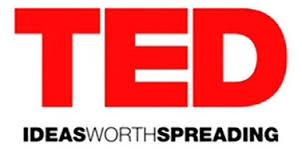Your brand is your story, your story is your brand; the art of Storytelling
“Ted Talks” have become the gold standard for a winning presentation.
However, Ted Talks are also a model for building a flourishing brand; because
at their heart, both a successful presentation and a successful brand are
matters of storytelling.
Carmine Gallo, author of the book Talk Like Ted, says
the single most successful presentation in Ted Talk history spent 65% of its
time telling stories rather than facts and data points. “Our brains are wired for
stories,” Gallo explains.
And your brand is a story. Whether it’s the half hour
you get to spend with a prospect or the 30 to 60 seconds you have to outline
what you do at a cocktail party, your story has to convey the value of your
product and service and, accurately reflect your brand.
1. The 5 Cs of
storytelling
Have a compelling brand story that can attract customers:
- Character. Your brand should be told through the
eyes of real people. This could be the founder, customers, or even the
suppliers. For example, Starbucks (American coffee company and coffeehouse chain) and Taco Bell (American fast-food restaurants chain) have put out commercials
where they tell their brand story from the viewpoint of the farmers who
provide their ingredients.
- Conflict. Conflict is the essential element of
drama, and it should be an essential element of your brand story. Any
product or service is created to meet an unfulfilled need, and any
unfulfilled need presents conflict or problems.
- Cure. There must be a cure to the
conflict—something that adds value to a person’s life.
- Change. The “characters” in your story, such as your customers, must change as a result of the conflict. Once their conflict is cured, their lives are never quite the same again—they are improved from that point forward.
- Carryout message. This is the takeaway message from your story. Customers, employees, stakeholders, and everyone else who comes into contact with your brand must understand how it can help them attain the success they desire.
You might believe that’s all fine for a John Grisham novel but wonder if
it’s applicable to a small business brand. Think again: Storytelling doesn’t
have to be fiction. It’s simply stripping away excess verbiage and focusing on
the people and inspiration behind a company or product, resulting in strong
brand awareness and brand consistency.
2. The 5 Cs in
action
Consider an example that Gallo gave of Ludwick
Marishane, a young man from Cape Town, South Africa, who was named
the 2011 Global Student Entrepreneur of the Year because he didn’t want to take
a bath. He invented DryBath, the world’s first non-water-based,
bath-substitution lotion.
Pause for a moment and think about what the 5Cs in Marishane’s story
might be. Here they are, in roughly 30 seconds of reading time:
- Marishane grew up in an area where water and electricity supply
were unpredictable, and one day while sunbathing with his friends he
thought about solutions to the difficulty of being able to take a
bath. (Character).
- He researched and found that 2.5 billion people in the world live
in conditions like this, increasing their risk of contracting
disease. (Conflict).
- He created the world’s first and only bath-substitution gel, which
people can apply to their skin and use to clean themselves without any
running water. (Cure).
- As a result, people improve their sanitation and reduce risk of
trachoma and other diseases. (Change).
- DryBath is the rich man’s convenience and the poor man’s lifesaver. (Carryout Message).
If you look closely at any strong brand, you can see a similar pattern,
because every brand has a story, and every story has the same structure. So
examine your company and products, considering how they were shaped by the 5Cs.
And at that point, you’ll have a brand story well worth telling.
Help customers tell your story, because no publicity can match that which is offered by your
customers.
Edited by ‘Dele Dele-Olukoju, Marketing Communication consultant and publisher of the online Marketing Communication Digest. He writes from Lagos, Nigeria.







Comments
Post a Comment